On April 11 & 12…
“There was no doubt this morning that a super-hurricane, Mt. Washington style, was in full development. I dropped all other activities and concentrated on observations. Everyone in the house was ‘mobilized’ as during a war attack.”
~Sal Pagliuca
Mount Washington Observatory Log Book Entry
There will be no “lesson” on Sunday. I am instead using this column to cover a few of the events from April 11 and April 12.
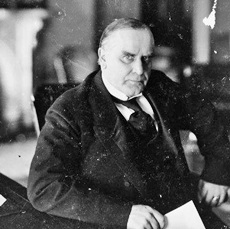
1898– President William McKinley asked Congress for a declaration of war against Spain.
A February 15, 1898, an explosion aboard the USS Maine in Havana harbor killed 260 U.S. personnel. Public opinion in the U.S., driven in part by the misleading journalism of William Randolph Hearst, blamed Spain, though that nation had no reason for wanting to provoke the U.S. to intervene in Cuba’s war for independence.
On March 26, McKinley demanded that Spain end hostilities by October 1. Spain rejected McKinley’s proposal and objected to his interference. McKinley requested authorization from Congress to intervene in Cuba on April 11.
The story continues on April 13.
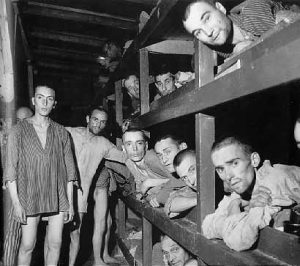
1945– A detachment of troops of the U.S. 9th Armored Infantry Battalion, from the 6th Armored Division, part of the U.S. Third Army, and under the command of Captain Frederic Keffer, arrived at Buchenwald concentration camp at 3:15 p.m. (now the permanent time of the clock at the entrance gate).
Although the exact number of deaths at Buchenwald has never been (and will never be) determined, most estimates put it in the 55,000 range.
Among the liberated were author Elie Wiesel, who would win the Nobel Peace Prize in 1986, and actor Robert Clary, known for his role as LeBeau on Hogan’s Heroes.
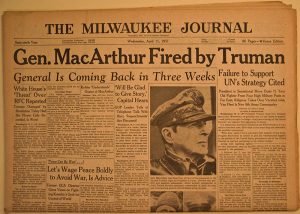
1951– In perhaps the most famous civilian-military confrontation in the history of the United States, President Harry S. Truman relieved General Douglas MacArthur of command of the U.S. forces in Korea.
The firing of MacArthur set off a brief uproar among the American public, but Truman remained committed to keeping the conflict in Korea a “limited war.”
In December 1950, hundreds of thousands of Chinese troops had crossed into North Korea and drove the U.S. troops back into South Korea. MacArthur – a longtime proponent of invading North Korea, which Truman rejected – asked for permission to bomb communist China and use Nationalist Chinese forces from Taiwan against the People’s Republic of China.
Truman flatly refused these requests and a very public argument began to develop between the two men.
By April 1951, the military situation had stabilized, but when MacArthur approved an attack 20 miles north of the 38th Parallel, he did so without consulting with Washington until after the attack began.
A furious President Harry Truman relieved MacArthur of his command.
Truman’s dismissal of MacArthur came as a shock to many Americans. U.S. Sen. Robert Taft (R-Ohio) called for immediate impeachment proceedings against Truman.
“President Truman must be impeached and convicted. His hasty and vindictive removal of General MacArthur is the culmination of series of acts which have shown that he is unfit, morally and mentally, for his high office. The American nation has never been in greater danger. It is led by a fool who is surrounded by knaves.”
MacArthur Factoid: What his supporters didn’t know at the time of his dismissal was his plan to end the Korean conflict with the use of atomic weapons. In a 1954 interview, MacArthur said…
“I could have won the war in Korea in a maximum of 10 days…. I would have dropped between 30 and 50 atomic bombs on his air bases and other depots strung across the neck of Manchuria…. It was my plan as our amphibious forces moved south to spread behind us – from the Sea of Japan to the Yellow Sea – a belt of radioactive cobalt. It could have been spread from wagons, carts, trucks and planes. For at least 60 years there could have been no land invasion of Korea from the north. The enemy could not have marched across that radiated belt.
The truce Truman entered into – that stupendous blunder of refusing to win when we could have won – has given China the breathing time she needed.“

1968– President Lyndon Johnson signed the Civil Rights Act of 1968.
Also known as the Fair Housing Act, it was a landmark part of legislation in the United States that provided for equal housing opportunities regardless of race, religion, or national origin and made it a federal crime to “by force or by threat of force, injure, intimidate, or interfere with anyone … by reason of their race, color, religion, or national origin.”

2017– Guitarist John Warren Geils, known professionally as J. Geils, died of natural causes at the age of 71.
He was the founder of the J. Geils Band, who released eleven albums between 1970 and 1985 and had several major hits, including Freeze-Frame, Centerfold, Must Have Got Lost and Love Stinks.
ON APRIL 12…
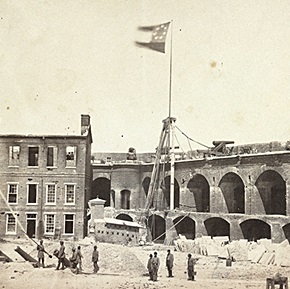
1861– The bloodiest four years in American history began when Confederate shore batteries under General P.G.T. Beauregard, opened fire on Union-held Fort Sumter in South Carolina’s Charleston Bay.
During the next 34 hours, 50 Confederate guns and mortars launched more than 4,000 rounds at the poorly supplied fort. The next day, U.S. Major Robert Anderson surrendered the fort (the photo above shows the Confederate flag being raised).
No one on either side had been killed, although two Union soldiers died when the departing soldiers fired a gun salute, and some cartridges exploded prematurely. It was a nearly bloodless beginning to America’s bloodiest war.
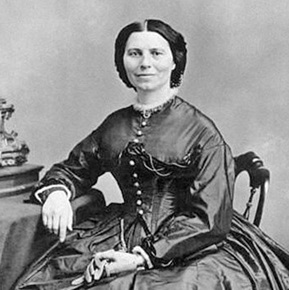
1912– Clara Barton, a nurse and founder of the American Red Cross, died at the age of 90.
She was a teacher and a government worker before heading off to minister the wounds of soldiers, often on bloody civil war battlefields. Barton was so close to the front lines at the Battle of Sharpsburg that a bullet passed through her clothes and killed the wounded soldier she was tending.
After the war, she ran the Office of Missing Soldiers and helped locate more than twenty-two thousand missing men.
During a visit to Europe, she was told of an organization called the International Red Cross Committee. She came back to the United States and began work toward organization of an American Red Cross. Barton became the first president of the organization and served as its head for twenty-two years.

1934– The wind was howling in New Hampshire.
Wendell Stephenson, a staff member at the Mount Washington Observatory, checked the wind speed recorder. It registered at 105 mph. It was clearly less than he expected. This meant one thing – the instrument on top of the Auto Road Stage Office (the Observatory’s early home) was hampered by ice buildup.
At 4:00 a.m., Stephenson suited up, grabbed a wooden club and headed for the door. The intense wind created so much pressure that he was knocked to the floor as he opened the door. He struggled as he made his way to the ladder.
With dozens of blows, he cleared the accumulated ice from the anemometer. He dropped the club by accident, and it sailed off into the fog.
Back inside, he flipped on the recorder and verified that the wind now topped 150 mph.
As the day wore on, Stephenson and fellow staffers Salvatore Pagliuca and Alex McKenzie checked the readings as winds grew stronger and stronger. Frequent values of 220 mph were recorded with occasional gusts of 229 mph.
And then, at 1:21 p.m., the extreme value of 231 mph out of the southeast was recorded. It was the highest wind gust ever recorded on the surface of the Earth.
The Mount Washington record was toppled in 1996 when an unmanned instrument station in Barrow Island, Australia recorded a new record of 253 miles per hour during Cyclone Olivia. Though the Observatory record fell, it still stands as the highest surface wind speed ever observed by man.
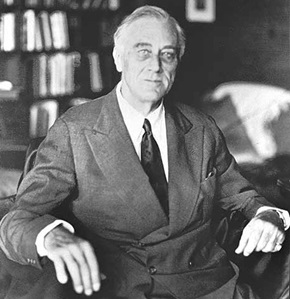
1945– U.S. President Franklin Delano Roosevelt, the longest serving president in American history, died three months into his fourth term.
Roosevelt was at his “Little White House” retreat in Warm Springs, GA to rest before his anticipated appearance at the founding conference of the United Nations.
On the afternoon of April 12, Roosevelt said, “I have a terrific headache,” then slumped forward in his chair, unconscious, and was carried into his bedroom.
The president’s attending cardiologist, Dr. Howard Bruenn, diagnosed the medical emergency as a massive cerebral hemorrhage.
At 3:35 p.m, Roosevelt died at the age of 63.
The photo above was taken one day before Roosevelt’s death. It was the final photograph taken during his life.
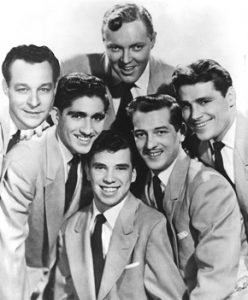
1954– Bill Haley and the Comets recorded (We’re Gonna) Rock Around The Clock at Pythian Temple studios in New York City.
The single sold a respectable but underwhelming 75,000 copies in the coming months, and was destined to be forgotten until it was chosen to play over the opening credits of the 1955 film, Blackboard Jungle.
On July 9, 1955, Rock Around The Clock became the first rock and roll recording to hit the top of Billboard’s Pop charts, a feat it repeated on charts around the world.
If rock and roll was a social and cultural revolution, then (We’re Gonna) Rock Around The Clock was its Declaration of Independence.

1961– Onboard the spacecraft Vostok 1, Soviet cosmonaut Yuri Gagarin became the first human being to travel into space.
During the flight, the 27-year-old test pilot and industrial technician also became the first man to orbit the planet, a feat accomplished by his space capsule in 89 minutes. Vostok 1 orbited Earth at a maximum altitude of 187 miles and was guided entirely by an automatic control system.
The triumph of the Soviet space program in putting the first man into space was a great blow to the United States, which had scheduled its first space flight for May 1961.
In addition, Gagarin orbited Earth, a feat that eluded the U.S. space program until February 1962 when astronaut John Glenn made three orbits in Friendship 7.

1965– Mr. Tambourine Man was released by Columbia Records as the debut single for the Byrds.
The single’s success – it shot to #1 within weeks – initiated the folk rock boom of 1965 and 1966, with many acts imitating the band’s hybrid of rock beat, jangly guitar, and poetic or socially conscious lyrics.
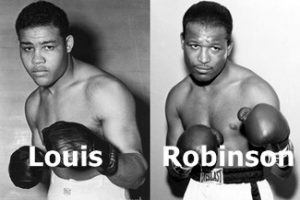
1981– Former heavyweight boxing champion Joe Louis died of cardiac arrest at the age of 66. The “Brown Bomber” had a career record of 66-3 with 52 knockouts.
1989– Former welterweight and middleweight boxing champion “Sugar Ray” Robinson died of complications of diabetes and Alzheimer’s disease. He was 67.
Robinson’s career record was 171-19-6, with 108 knockouts.
In addition to being two of the greatest boxers in history, Louis and Robinson shared something else.
Despite earning millions in the ring, they both struggled financially, thanks to numerous con artists and the overall corruption of the boxing business that existed in their lifetimes.
Compiled by Ray Lemire ©2020 RayLemire.com / Streamingoldies.com. All Rights Reserved.